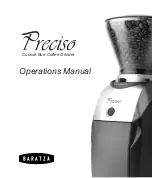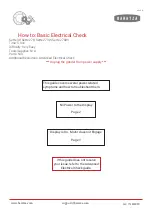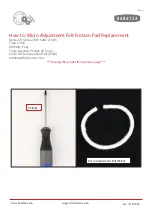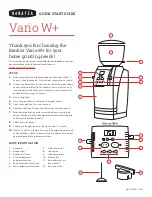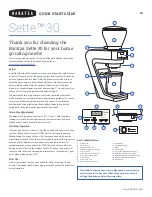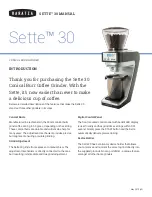
1 609 929 M21 | (22/8/07)
Bosch Power Tools
20
| English
Assembly
f
Before any work on the machine itself, pull
the mains plug.
Auxiliary Handle
The auxiliary handle
8
enables convenient han-
dling and optimal distribution of power, especial-
ly at high removal rates.
–
Screw the auxiliary handle into the corre-
sponding threaded hole
9
in the housing.
Dust/Chip Extraction
Dusts from materials such as lead-containing
coatings, some wood types, minerals and metal
can be harmful to one’s health. Touching or
breathing-in the dusts can cause allergic reac-
tions and/or lead to respiratory infections of the
user or bystanders.
Certain dusts, such as oak or beech dust, are
considered as carcinogenic, especially in connec-
tion with wood-treatment additives (chromate,
wood preservative). Materials containing asbes-
tos may only be worked by specialists.
–
Use dust extraction whenever possible.
–
Provide for good ventilation of the working
place.
–
It is recommended to wear a P2 filter-class
respirator.
Observe the relevant regulations in your country
for the materials to be worked.
External Dust Extraction
You can either attach a vacuum hose or a Bosch
all-purpose vac with remote starting control to
the vacuum connection
1
.
Connecting a
Ø 35 mm
vacuum hose:
–
Attach a suitable adapter to the vacuum con-
nection
1
.
–
Connect the adapter with the vacuum hose
(
Ø 35 mm) of a vacuum cleaner.
Connecting a
Ø 19 mm
vacuum hose:
–
Firmly attach the vacuum hose (
Ø 19 mm) to
the vacuum connection
1
.
–
Attach a suitable adapter to the vacuum hose
and connect to a vacuum cleaner.
The vacuum cleaner must be suitable for the ma-
terial being worked.
When vacuuming dry dust that is especially detri-
mental to health or carcinogenic, use a special
vacuum cleaner.
Changing the Sanding Belt
f
Before any work on the machine itself, pull
the mains plug.
Removing the Sanding Belt (see figure B1)
–
Swing down the clamping lever
6
.
–
Pull off the loose sanding belt
4
to the side.
Fitting a New Sanding Belt (see figure B2)
Before fitting the new sanding belt, clean the
sliding shoe
10
, the guide roller
11
and the ten-
sioning roller
12
, if required.
–
Select a new sanding belt with the requested
grit.
Application examples, see “Selecting the
Sanding Belt
”
, page 21.
–
Mount the new sanding belt
4
.
–
To tension the sanding belt, swing up the
clamping lever
6
until it can be heard to en-
gage.
–
Adjust the belt tracking. (see “Adjusting the
Belt Tracking
”
, page 20)
Note:
Sanding belts used up on one side can be
turned by 180°, as sanding is possible in both ro-
tation directions due to the special bond.
Adjusting the Belt Tracking
(see figure C)
To ensure that the sanding belt always runs
against the same area of the sliding shoe and
does not "run off" to the side, the belt tracking
must be adjusted each time after changing the
sanding belt.
–
Set the thumbwheel
2
to “1
”
(low belt speed).
–
To
start
the machine, push the On/Off switch
3
towards the front to “
I
”.
OBJ_BUCH-472-001.book Page 20 Wednesday, August 22, 2007 5:20 PM
Содержание PVS 300 AE
Страница 3: ... 3 Bosch Power Tools 1 609 929 M21 22 8 07 A B1 1 2 3 8 4 5 9 4 6 8 7 7 6 ...
Страница 4: ...1 609 929 M21 22 8 07 Bosch Power Tools 4 B2 C E1 D 11 12 10 4 5 15 6 14 13 13 16 13 ...
Страница 5: ... 5 Bosch Power Tools 1 609 929 M21 22 8 07 E3 E2 18 23 17 17 19 20 21 22 ...
Страница 6: ...1 609 929 M21 22 8 07 Bosch Power Tools 6 23 20 23 20 20 22 F1 F2 F3 G H J ...































